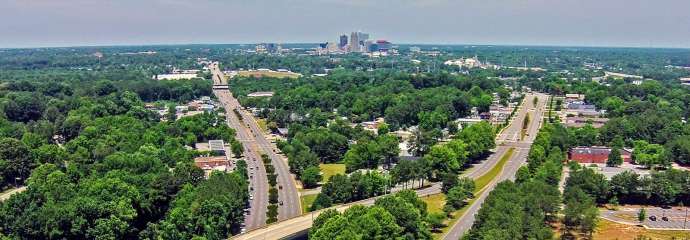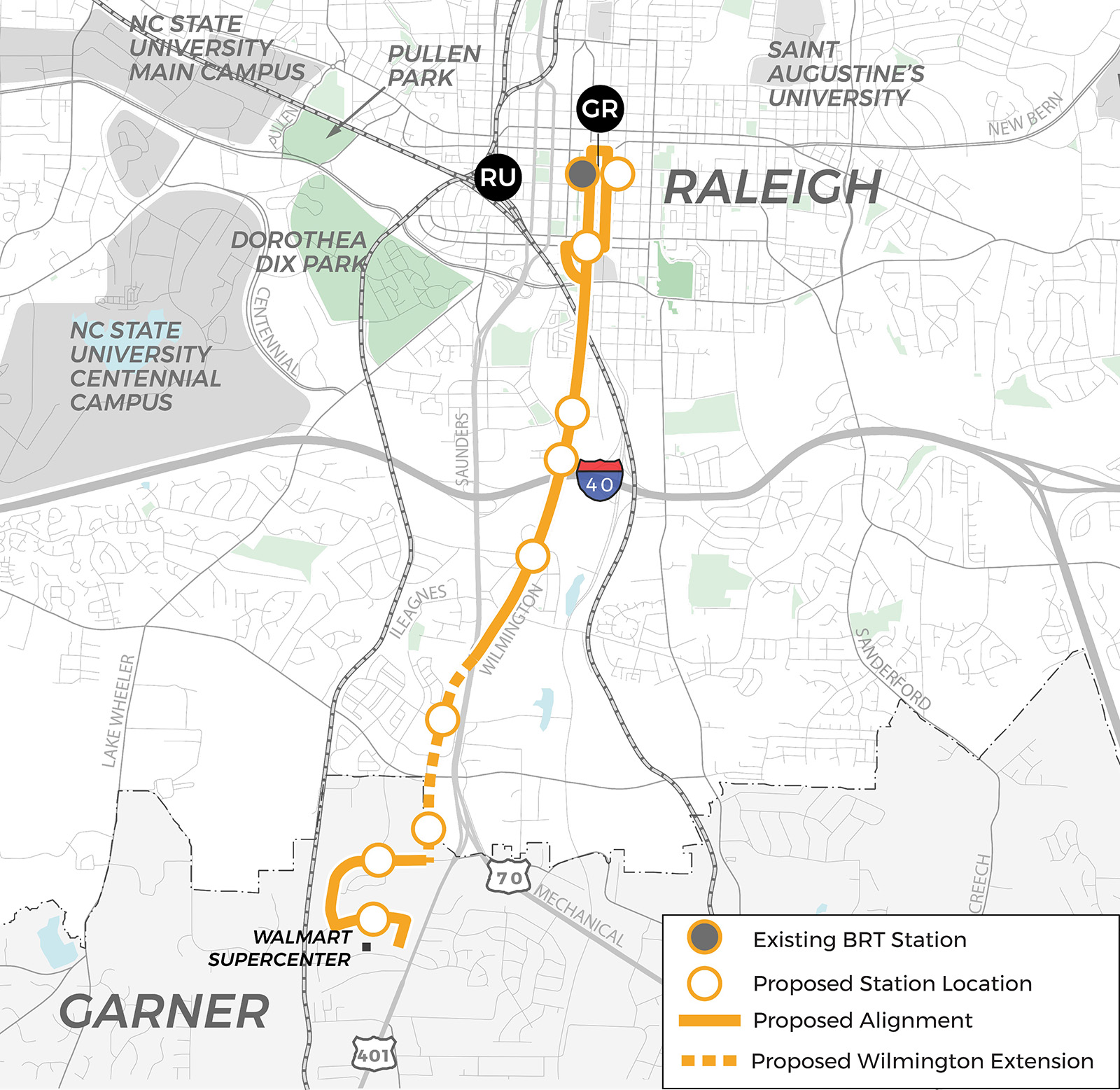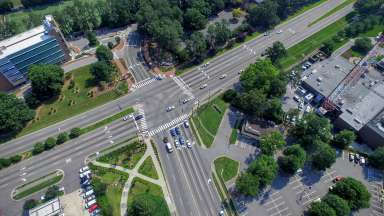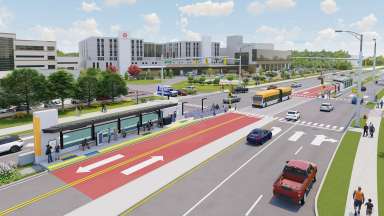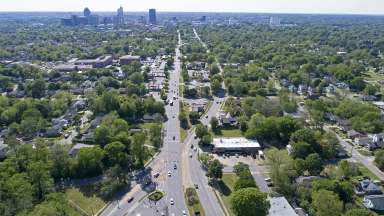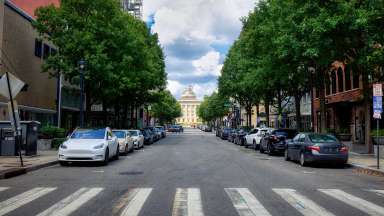Station area planning is the process of planning for future bus rapid transit (BRT) stations. It involves planning for where people will walk and bike to transit and how the areas around BRT can grow to support healthy, affordable, and equitable neighborhoods.
This process is separate from the design of the Southern BRT stations and bus lanes. It is a community planning process that will consider areas within a short walk of the BRT stations along S. Wilmington Street.
Are you interested in supporting housing affordability, better places to walk and bike, and reducing carbon emissions and air pollution around future transit routes?
The Southern Station Area Planning Options and Concept Survey closed on April 22, 2024. View the survey results.
